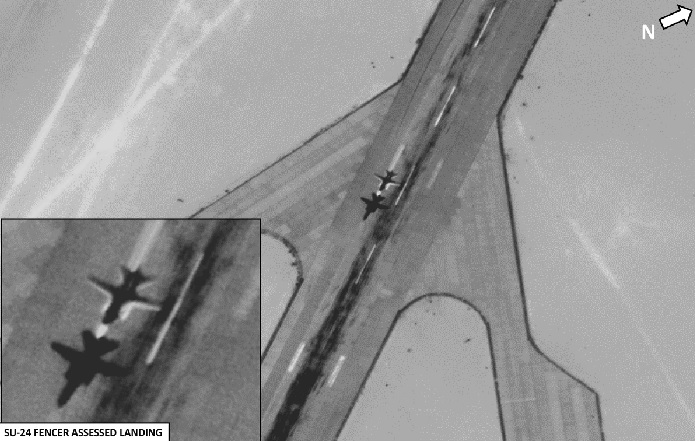
Russian fighter jets mercenaries are flying in Libya are engaging in ground strikes and combat activities, U.S. Africa Command says.
According to Navy Rear Adm. Heidi Berg, AFRICOM’s director of intelligence, there are at least 14 Russian fighter aircraft that are based out of Al Jufra and Al Khadim airfields in Libya.
“They are, we assess, being operated by Wagner Group,” Berg told reporters Friday. “These fighters are engaging in combat activities. We have seen them conduct ground strikes and conduct combat activities in country. So they are not there for training the Libyan National Army, they’re not there to simply support the LNA. They are there to conduct combat activities on behalf of their own national interests.”
“We also know they’re not that good,” Berg said, citing that one Mig-29 aircraft crashed in June followed by another on Sept. 7.
The Wagner Group — a private military company that U.S. officials have warned has close ties to the Kremlin and is headed by a former Russian intelligence officer — supports the Libyan National Army that’s going up against the United Nations-backed Government of National Accord.
In May, AFRICOM announced Russia had deployed MiG-29 and Su-24 aircraft to Al Jufra Airfield in Libya and that the aircraft were expected to support Wagner Group mercenaries. The command said that the aircraft touched down in Syria and were repainted to obscure their Russian ties before ultimately landing in Libya.
“Russia is clearly trying to tip the scales in its favor in Libya. Just like I saw them doing in Syria, they are expanding their military footprint in Africa using government-supported mercenary groups like Wagner,” AFRICOM commander Army Gen. Stephen Townsend said in May.
Russia rejected AFRICOM’s claims and former Russian Air Force chief and current member of parliament Viktor Bondarev described the assertion as “crazy” in a statement in May. He also said “if there are any airplanes in Libya, they are Soviet, not Russian.”
But AFRICOM deputy director for intelligence Brig. Gen. Gregory Hadfield said the aircraft were not ones already in Libya’s inventory and were recently flown to Libya.
“So we are confident that these aircraft were not there, and were not older aircraft that had been maintained,” Hadfield told reporters in May.
“Russia is executing the same playbook as it successfully employed in Crimea, Ukraine and to a lesser extent in Syria,” Hadfield said. “Russia has proved its willingness to violate the sovereignty of those nations, and appears willing to do the same in Africa.”
More recently, AFRICOM asserted in July that the Wagner Group planted landmines and improvised explosive devices from the outskirts of Tripoli to Sirte starting in mid-June. AFRICOM claimed it believes the weapons originated from the Wagner Group.
Approximately 3,000 Wagner Group mercenaries are in Libya and the group has recruited approximately 2,000 Syrian mercenaries to operate in support of the LNA, Berg said Friday. Conversely, Turkey has dispatched roughly 5,000 Syrian mercenaries to challenge the LNA, according to a recent Department of Defense Inspector General report.
The U.S. kept a small number of troops in Libya starting in 2011 after the removal of Libyan dictator Moammar Gadhafi to back local forces countering Islamic State and al-Qaida-linked militants there.
But in April 2019, U.S. troops were removed from Libya due to heightened unrest when the LNA led by Field Marshal Khalifa Hifter launched an offensive against the GNA in Tripoli.
Hifter was a former CIA asset who was exiled during Gadhafi’s leadership. Before returning to Libya in 2011, he obtained U.S. citizenship while he lived in Virginia in the 1990s.
However, his offensive was quashed in June and he retreated from Tripoli after Turkish-backed forces made progress fighting the LNA.
AFRICOM told Military Times in May that U.S. troops have not returned to Libya since they exited in 2019. Approximately 6,000 Department of Defense personnel are on the African continent.
